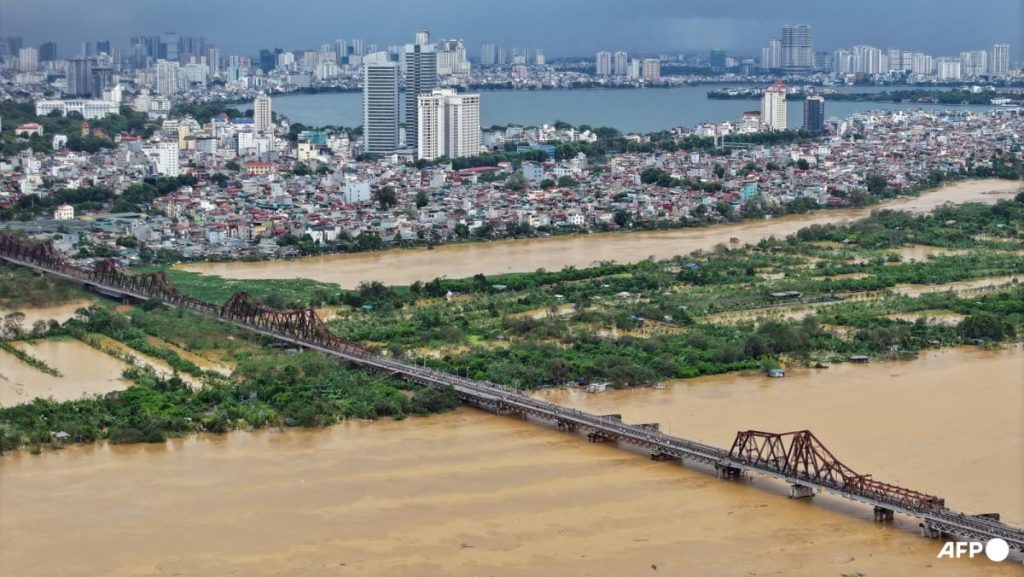Typhoon Yagi has caused devastating damage in Vietnam, with the death toll rising to 141 and 59 others still missing. The disaster has been exacerbated by heavy rains triggering landslides and floods throughout northern regions of the country. The Red River in Hanoi is also rapidly rising, threatening to inundate downtown districts of the capital. The situation has led to severe property damage, disruptions to business and industry, and the displacement of thousands of residents living in low-lying areas.
The government of Vietnam is working to address the crisis, with some schools in Hanoi closing for the rest of the week as a precautionary measure against the flooding. As the water level of the Red River continues to rise at a rate of 10cm per hour, authorities are on high alert to ensure the safety of those in affected areas. The disaster management agency is coordinating efforts to provide relief and support to those impacted by the typhoon, with a focus on rescuing missing persons and addressing the urgent needs of affected communities.
Despite the ongoing rescue and relief efforts, the devastation caused by Typhoon Yagi has had a significant impact on the region. The loss of life, damage to infrastructure, and disruption to daily life have left many struggling to cope with the aftermath of the disaster. With severe property damage reported and widespread flooding affecting the region, the recovery process is expected to be a long and challenging one for those affected by the typhoon.
The international community has also expressed concern and offered assistance to Vietnam in the wake of the typhoon. Countries and organizations have extended offers of support and aid to help with rescue and relief efforts, emphasizing the need for solidarity and cooperation in times of crisis. As the situation continues to unfold, the focus remains on addressing the immediate needs of those affected by the disaster and working towards long-term recovery and rebuilding efforts to help the region recover from the impact of Typhoon Yagi.
The government of Vietnam is also working to address the underlying issues that have contributed to the severity of the disaster, including deforestation, urbanization, and climate change. By taking steps to strengthen disaster preparedness and response mechanisms, as well as implementing measures to mitigate the impact of extreme weather events, authorities hope to reduce the vulnerability of communities to future disasters. As the country grapples with the aftermath of Typhoon Yagi, efforts to address these broader challenges will be crucial in building resilience and ensuring the safety and well-being of its citizens in the face of future emergencies.
In the face of the devastating impact of Typhoon Yagi, the people of Vietnam have shown resilience and solidarity in coming together to support one another in this time of crisis. Communities have rallied to provide assistance to those in need, demonstrating the strength and spirit of unity in the face of adversity. As the recovery and rebuilding process continues, the efforts of individuals, local authorities, and the international community will be vital in helping Vietnam overcome the challenges posed by the disaster and move towards a more sustainable and resilient future.


